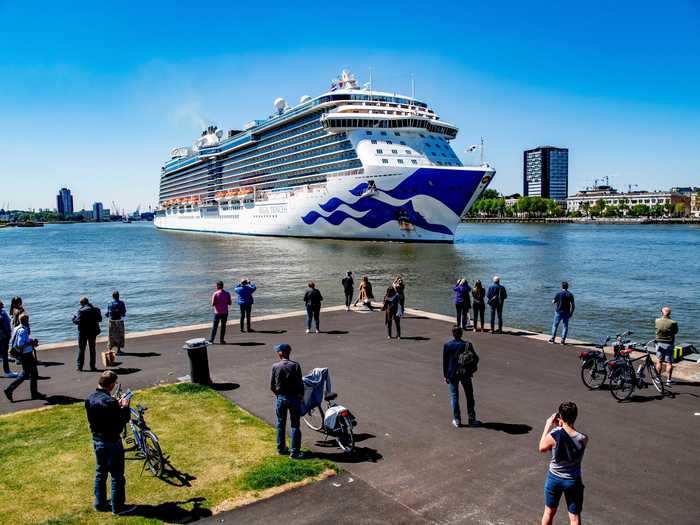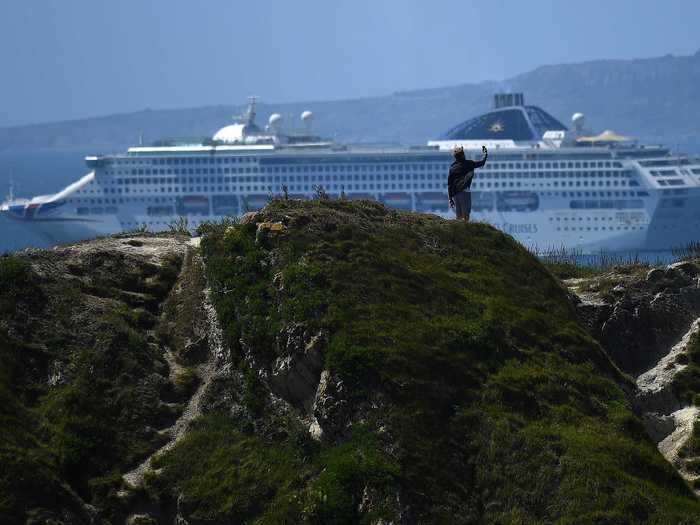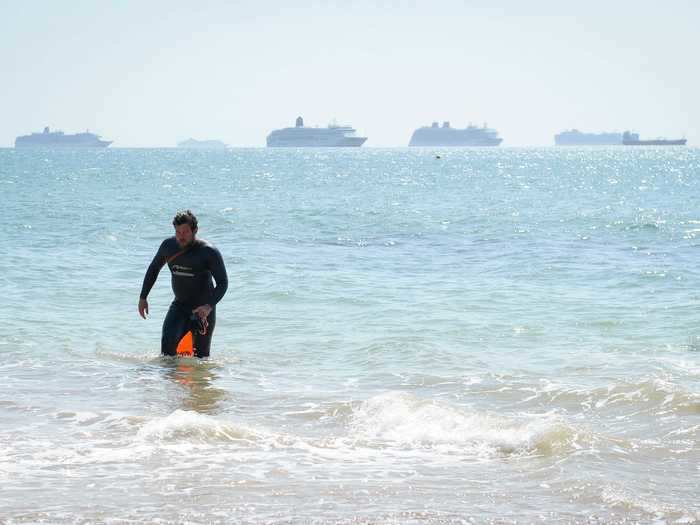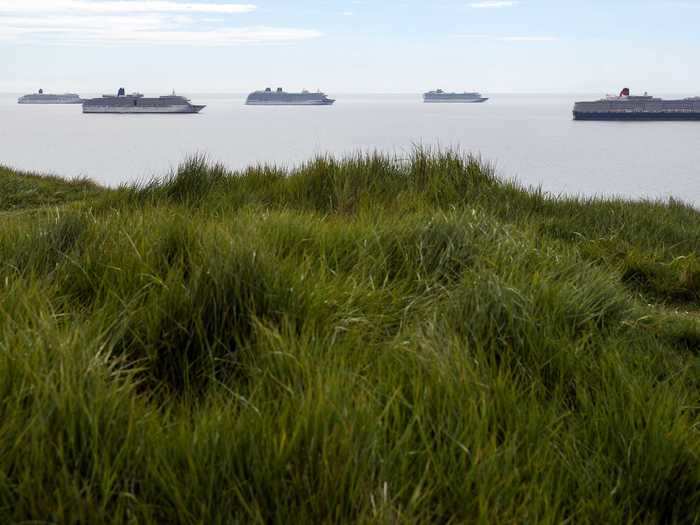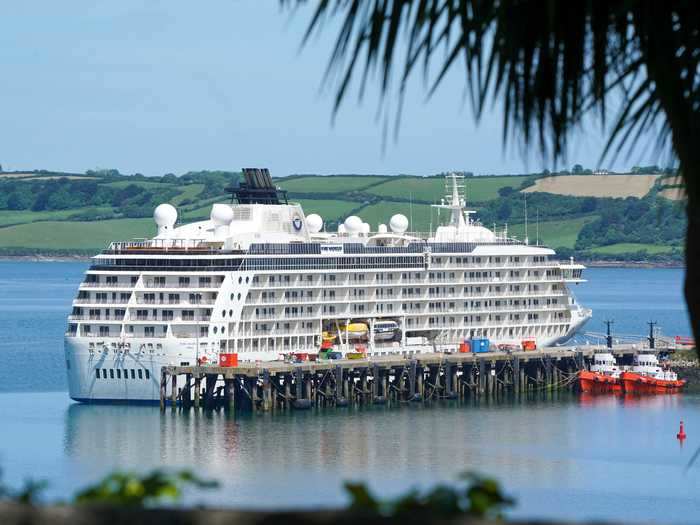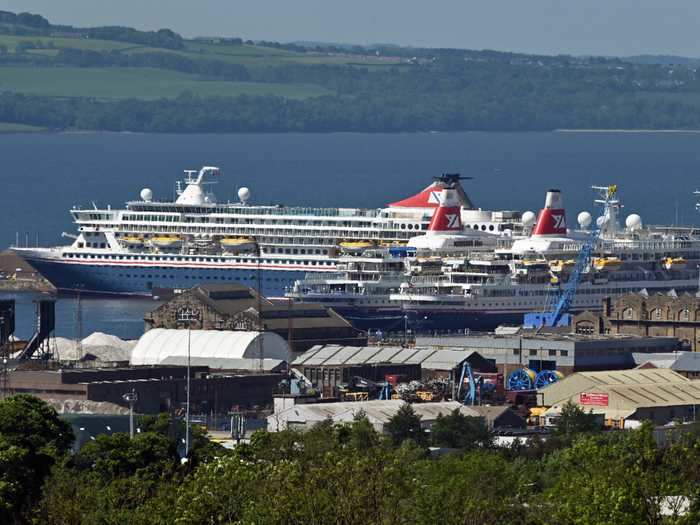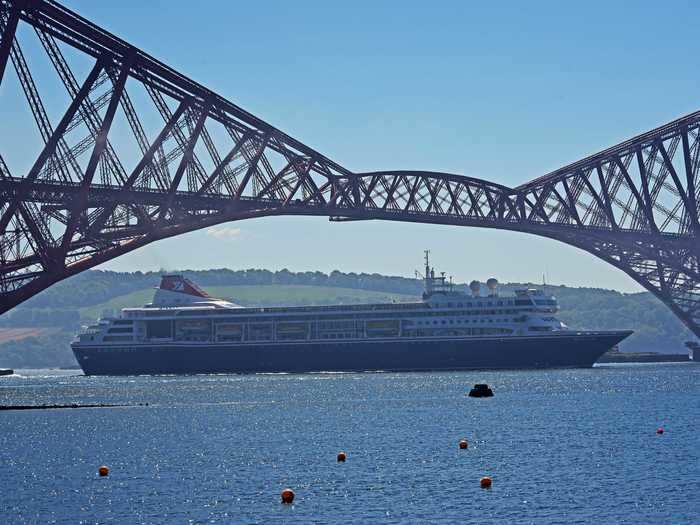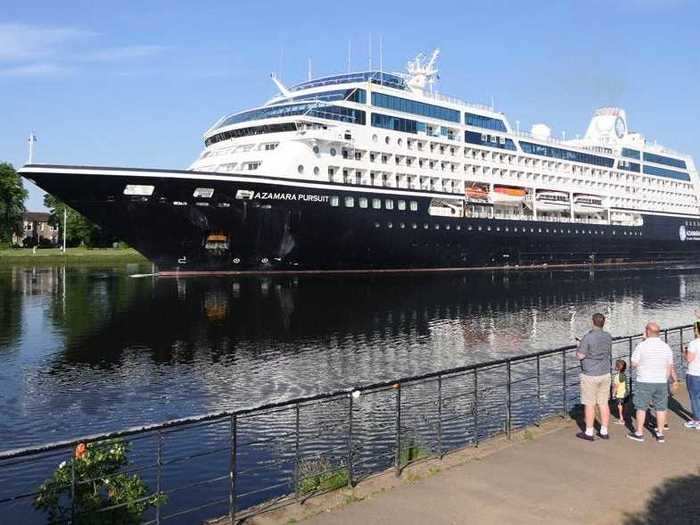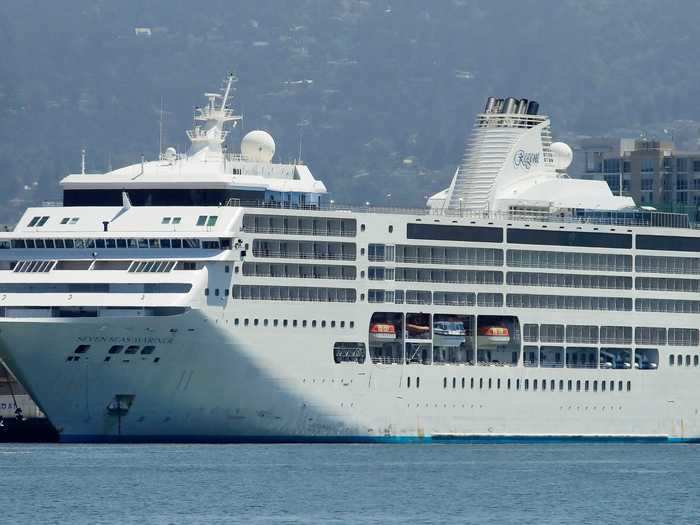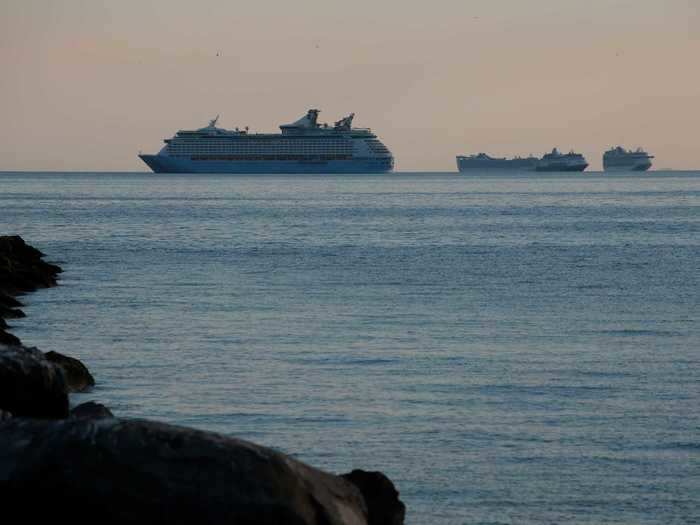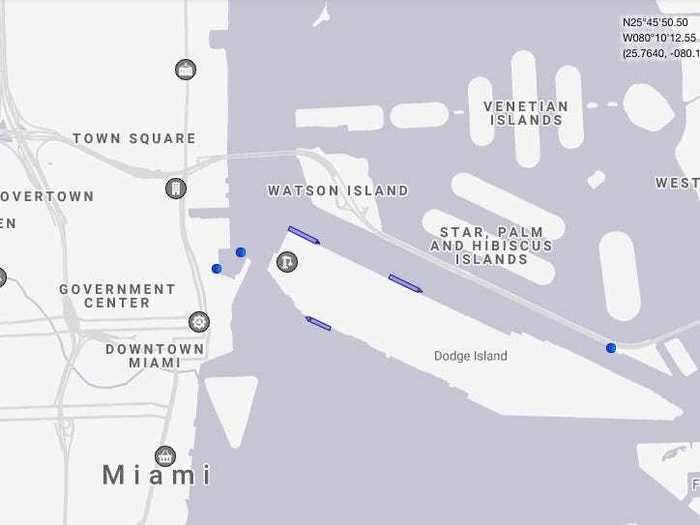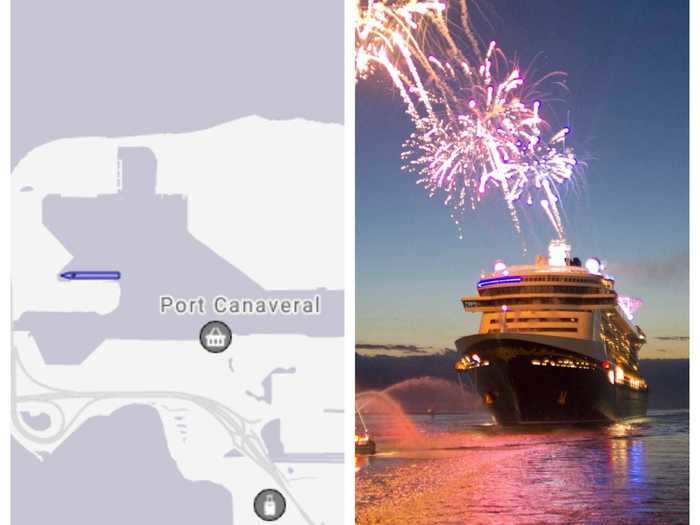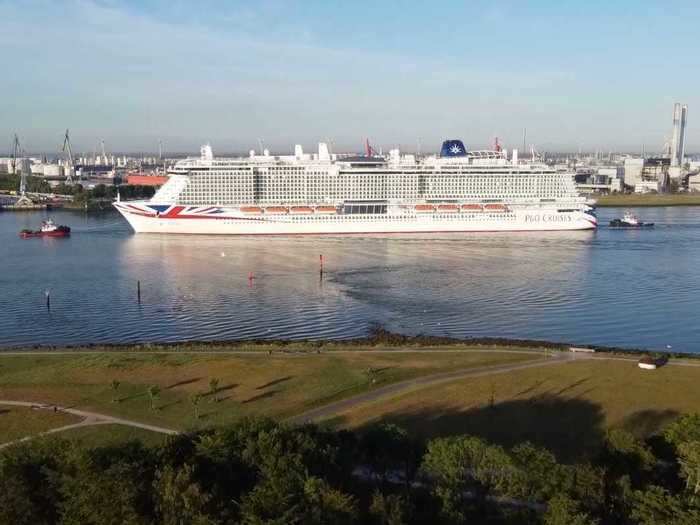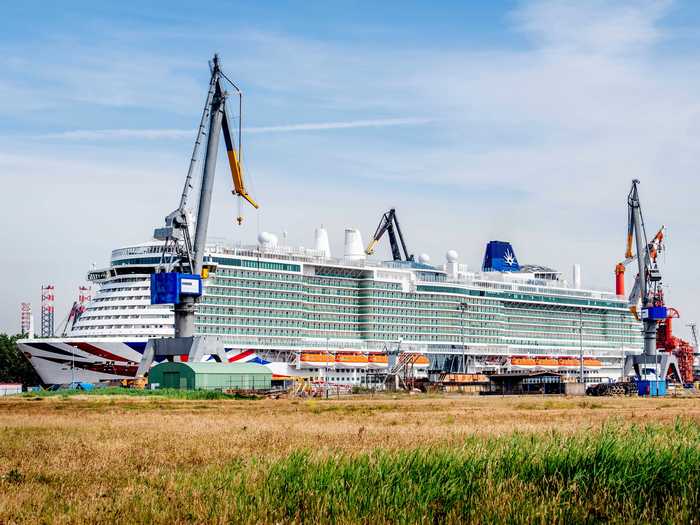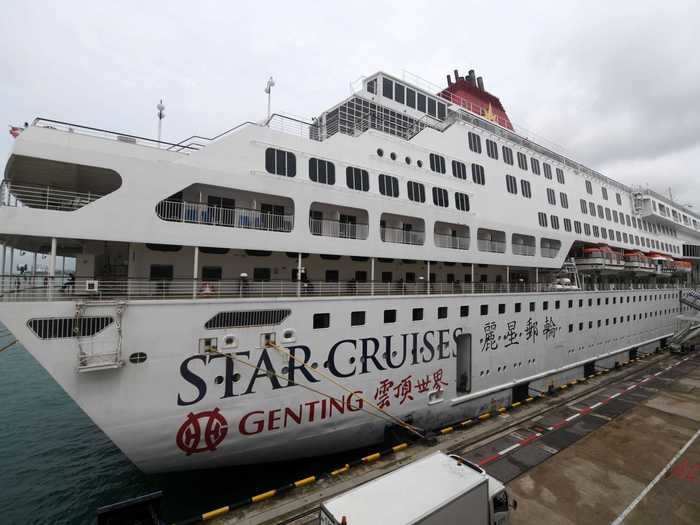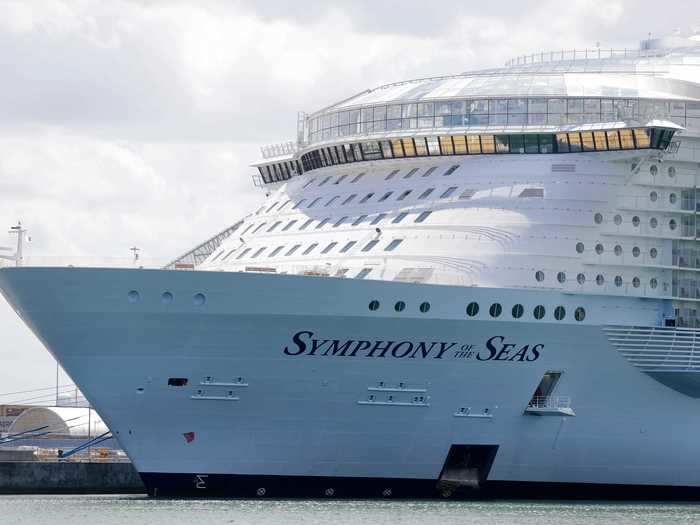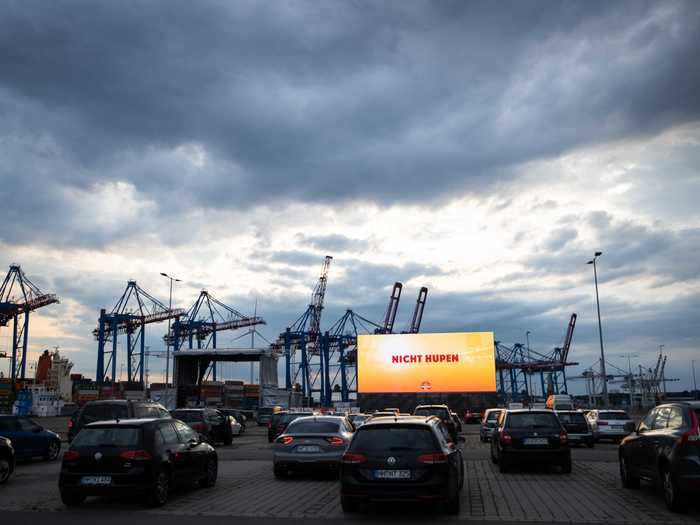A swimmer exits the sea against the backdrop of P&O cruise ships off Preston beach in Weymouth, England, on May 24, 2020.Getty
- As the coronavirus took hold in March, cruise lines canceled upcoming trips, and fearing infection, ports turned away vessels already at sea.
- Though the outbreak has eased for most countries, very little has changed for the industry since.
- Travel bans and social distancing are still in place. Cruise ships are left drifting, empty, off coasts, or laid-up in docks to wait out the storm.
- Here's what they look like.
Travel limits caused by the coronavirus in March saw the cruise industry freeze and clear their calendars for much of the year, leaving many empty liners laid up in ports or anchored out to sea, where they continue to drift listlessly.
Thousands of workers are stranded aboard and others are operating with small skeleton crews, sailing from berth to berth. Many ports have turned ships away, fearing they will bring new cases of the virus.
Even though the spread of the virus has peaked for many countries, travel bans remain in place, and the industry faces an uphill battle to make up for losses caused by the pandemic as well as moving past reputational damage done by outbreaks on ships.
Norwegian Cruises says it has "significant doubt" about its finances, and Carnival, the world's largest cruise operator, has laid off workers and slashed salaries.
"2020 is a wasted year," Frank Del Rio, CEO of Norwegian Cruises, said on May 14.
Here's what the cruise industry looks like right now:
The coronavirus has frozen commercial ocean travel. So the world's cruise ships have been laid up, waiting out the dark months ahead.
People waiting for relatives on board the Regal Princess cruise ship in Rotterdam on May 5, 2020.
Photo by Robin Utrecht/SOPA Images/LightRocket via Getty Images
This P&O cruises liner has been moored off the coast of Dorset, southern England, since April.
A man takes a selfie as a cruise ship is seen in the sea beyond, near West Lulworth on England's southern coast, on May 24, 2020.
Getty
In fact, six P&O cruise ships are currently moored there.
A swimmer exits the sea against the backdrop of P&O cruise ships off Preston beach on May 24, 2020 in Weymouth, UK.
Getty
From left to right, they are: the Queen Mary 2, Aurora, Arcadia, Britannia, Azura, and the Queen Victoria.
(Left to right) the Cunard Cruise Liner Queen Mary 2, P&O cruise ships Aurora, Arcadia, Britannia and Azura and the Cunard cruise ship Queen Victoria, in Weymouth Bay, UK.
Andrew Matthews/PA Images via Getty Images
The World, the largest private residential ship on the planet, docked in Falmouth, England, on May 26 and will be there for the forseeable, too.
'The World' residential cruise liner laid up in Falmouth seen on May 26, 2020.
Hugh Hastings/Getty Images
Meanwhile three cruise ships, owned by the Fred Olsen Cruise Lines company, are laid up in Rosyth, Scotland.
The Balmoral, Black Watch, and Boudicca seen in Rosyth Basin on June 1, 2020.
Ken Jack/Getty Images
The Braemar, also operated by the Fred Olsen Cruise Lines, is on its way to join them.
The Braemar passes under the Forth Bridge near Rosyth Basin.
Ken Jack/Getty Images
Forty miles away, the Azamara Pursuit is moored in Glasgow's River Clyde for the foreseeable.
Azamara Pursuit on the River Clyde on June 1, 2020.
Twitter/reGlasgow
The US is also home to many empty ships. Three empty ships run by Regent Seven Seas Cruises are now docked at the Port of Oakland, California.
The Seven Seas Mariner cruise ship docked at the Port of Oakland seen on May 21, 2020.
AP Photo/Ben Margot
Across the world, a group of passenger-free cruise ships were also anchored in Manila Bay, Philippines, for several weeks while crews were tested for COVID-19.
A group of cruise ships anchored in Manila Bay, Manila, Philippines, on May 8, 2020.
REUTERS/Eloisa Lopez
Marine tracking data shows a number of cruise ships are still laid up in the bay, including the Spirit, Panorama, Ruby Princess, and Sapphire Princess.
Satellite data shows a number of cruise liners docked off Manila Bay on June 3, 2020.
Marine Traffic
Princess Cruises, which is owned by Carnival Cruise Line, have been particularly hard hit during the pandemic, with the Diamond Princess and Ruby Princess both recording dozens of cases on board earlier this year.
The Celebrity Edge, MS Riviera, and Norwegian Epic are all laid up in Port Miami.
Marine traffic as seen at Port Miami on June 3, 2020.
Marine Traffic
And the Disney Fantasy laid up in its home berth at Port Canaveral, Florida, on June 2.
Disney Fantasy (right, in 2012) is laid up in its home berth at Port Canaveral, Florida (left).
Marine Traffic/Getty
Back in Europe, Iona, another P&O Cruises ship, docked in Rotterdam on June 2.
Iona arrives in Rotterdam on June 2, 2020.
YouTube/Schiffs Kanal
This gas-powered cruise ship was due to make its maiden voyage in 2020. The unnamed ship, owned by Carnival, is laid up in Rotterdam, Holland.
The yet-to-be-named Carnival craft docked at Rotterdam on June 2, 2020.
Robin Utrecht/SOPA Images/LightRocket via Getty Images
Meanwhile, the SuperStar Gemini is currently moored in Singapore and being used to house foreign workers who have recovered from COVID-19.
The SuperStar Gemini cruise ship at the Marina Bay Cruise Centre terminal in Singapore on May 23, 2020.
ROSLAN RAHMAN/AFP via Getty Images
The Miami Herald estimates that there are around 100,000 crew members currently trapped on cruise ships around the world.
The Symphony of the Seas cruise ship docked at Port Miami, on May 20, 2020.
AP/Wilfredo Lee
Due to lack of use, this cruise ship terminal in Hamburg has been turned into an open-air drive-in cinema with room for 620 cars in front of a 220 square-meter screen.
Cars at the drive-in cinema "Cruise Inn" at the cruise ship terminal in Hamburg-Steinwerder.
Christian Charisius via Getty Images
The future does not look bright for the industry, and the full extent of the damage will only hit home once travel bans end — whenever that may be.
Industry expert Ross Klein told Business Insider's Mark Matousek that COVID-19 has been the most disruptive thing to hit the industry since the 1985 murder of a passenger on the Achille Lauro.

